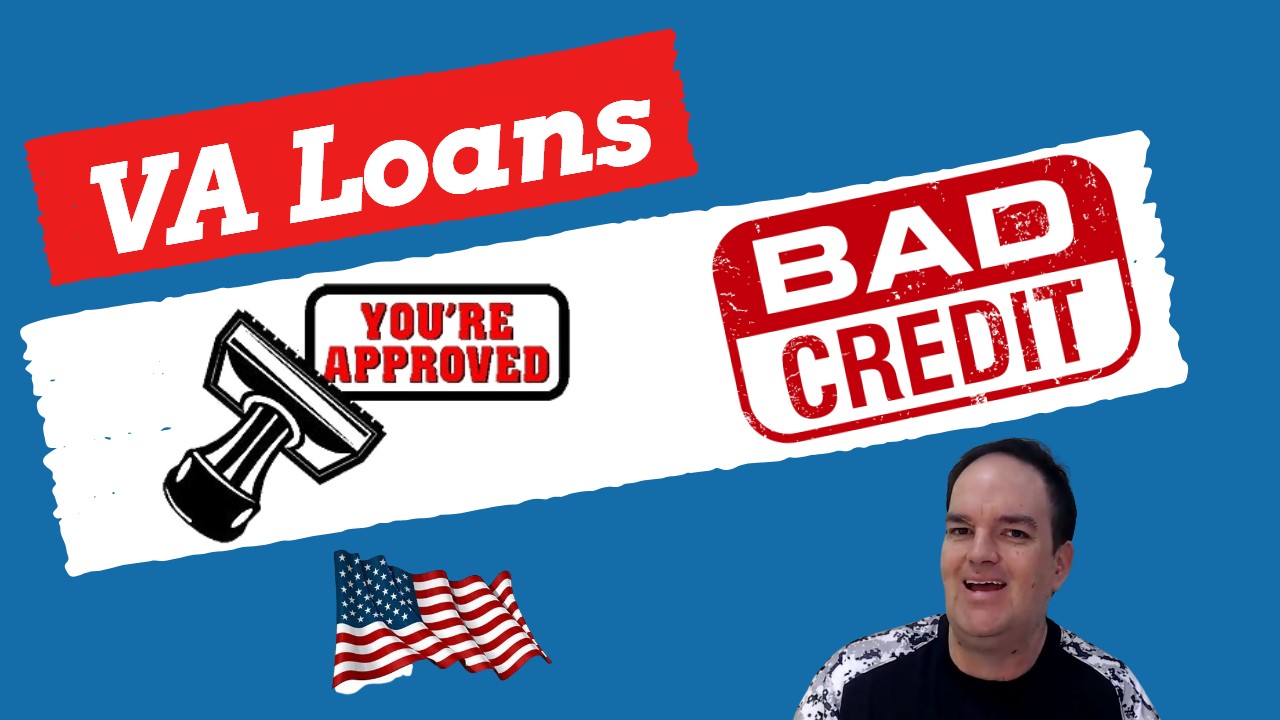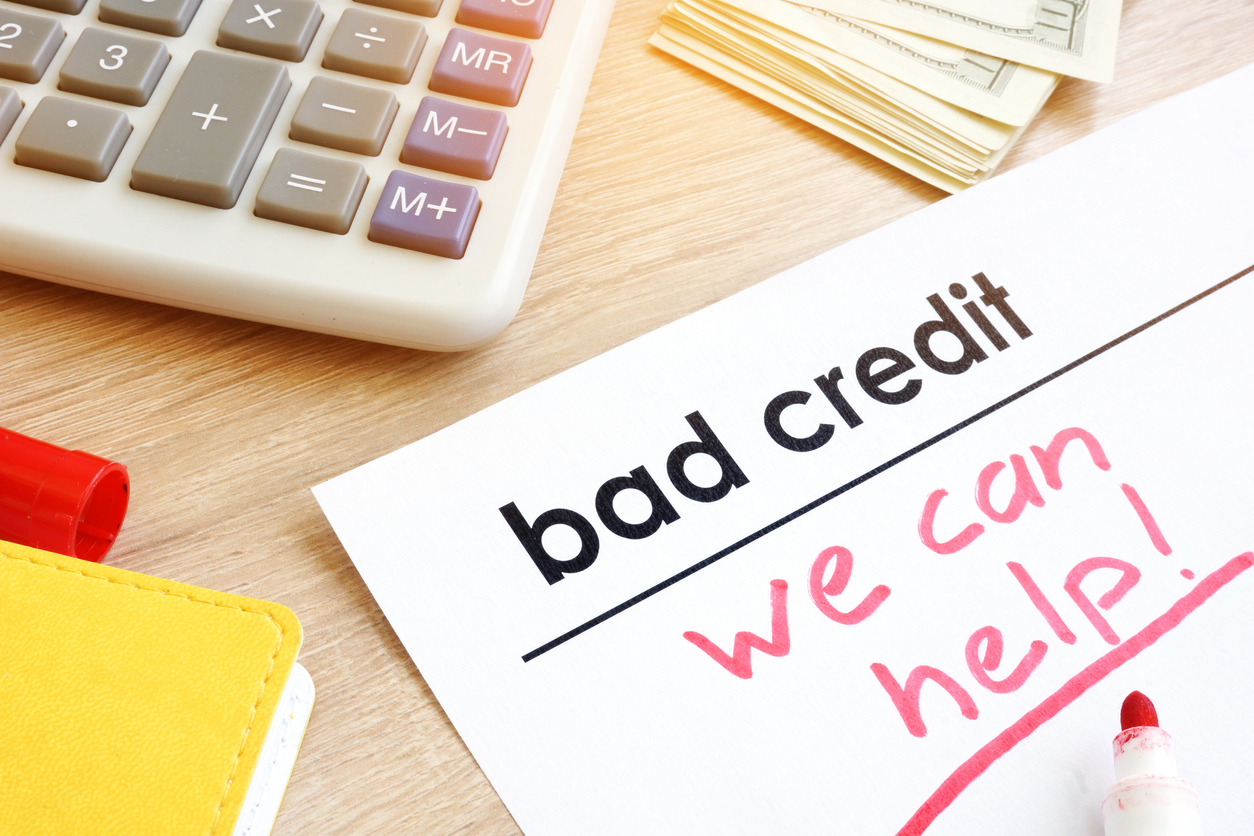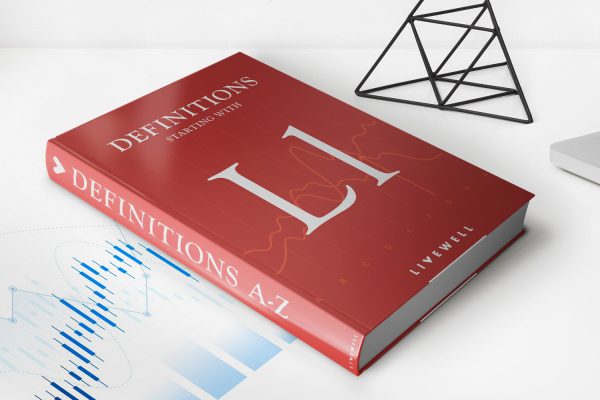

Finance
How To Get A $1000 Loan With Bad Credit
Modified: February 21, 2024
Looking for financial assistance? Learn how to secure a $1000 loan even with bad credit. Discover effective strategies to access the finance you need.
(Many of the links in this article redirect to a specific reviewed product. Your purchase of these products through affiliate links helps to generate commission for LiveWell, at no extra cost. Learn more)
Table of Contents
Introduction
Having bad credit can make it challenging to secure a loan when you need it the most. However, there are options available for those in need of a $1000 loan, even with a less-than-perfect credit score. Whether you need the money for an emergency expense, debt consolidation, or any other urgent financial need, there are steps you can take to increase your chances of approval.
In this article, we will guide you through the process of getting a $1000 loan with bad credit. We will explore the concept of bad credit, provide tips on researching loan options, guide you through the application process, and highlight the importance of meeting the requirements set by lenders. Additionally, we will discuss alternative lending options and the importance of comparing interest rates and terms. Understanding the risks involved and building credit for future loan opportunities will also be covered.
It’s important to note that while obtaining a loan with bad credit is possible, it may come with higher interest rates and stricter terms. However, by following the suggestions and taking the necessary steps, you can increase your chances of securing a $1000 loan to help alleviate your financial situation.
Now, let’s dive into the world of bad credit loans and explore the options available to you.
Understanding Bad Credit
Before delving into the process of obtaining a $1000 loan with bad credit, it’s crucial to have a clear understanding of what bad credit actually means. In simple terms, bad credit refers to a low credit score that indicates a higher level of risk for lenders.
There are several factors that can contribute to a bad credit score, including late payments, high credit card balances, defaults, bankruptcies, and foreclosures. When you have bad credit, traditional lenders such as banks may be hesitant to approve your loan application due to the perceived risk.
It’s important to check your credit score and review your credit report before applying for a loan. This will give you an idea of where you stand and allow you to identify any errors or discrepancies that could be negatively impacting your credit score. Taking steps to improve your credit score, such as paying bills on time and reducing credit card balances, can greatly increase your chances of obtaining a loan with better terms in the future.
However, if you need a $1000 loan urgently and have bad credit, don’t despair. There are lenders who specialize in offering loans to individuals with less-than-perfect credit. These lenders take into account other factors such as your income, employment history, and overall financial stability when considering your loan application. This provides an opportunity for individuals with bad credit to still access the funds they need when faced with unexpected expenses or emergencies.
It’s important to note that while bad credit loans can provide a lifeline during tough times, they often come with higher interest rates and fees. Therefore, it’s crucial to carefully consider your ability to repay the loan before committing to any borrowing.
Now that you have a better understanding of what bad credit entails, let’s move on to exploring the various loan options available to you.
Researching Loan Options
When it comes to obtaining a $1000 loan with bad credit, it’s important to do your due diligence and thoroughly research the available loan options. This step will help you identify lenders who specialize in working with individuals with poor credit and find the best terms and rates for your specific situation.
Here are some tips to consider when researching loan options:
- Online lenders: Explore online lending platforms that specialize in providing loans to individuals with bad credit. These lenders often have more flexible requirements and may offer better terms than traditional banks.
- Local credit unions: Check with local credit unions in your area. They may have more lenient lending policies and could be willing to work with individuals with bad credit.
- Peer-to-peer lending: Consider peer-to-peer lending platforms where individuals can lend money to borrowers. These platforms often have looser credit requirements and can be a viable option for those with bad credit.
- Payday loans: While payday loans typically come with high interest rates, they can be an option for individuals with bad credit who need immediate cash. However, exercise caution and carefully read the terms and conditions, as payday loans can trap borrowers in a cycle of debt.
As you research different loan options, pay attention to the interest rates, repayment terms, and fees associated with each option. Compare and contrast these factors to determine which lenders offer the most favorable terms given your financial situation.
In addition to researching lenders, consider reading reviews and testimonials from other borrowers who have dealt with these lenders. This can provide insight into their reputation and the overall experience borrowers have had with them.
Once you have gathered information on various loan options and lenders, you can proceed with the application process. In the next section, we will guide you through the necessary steps to apply for a $1000 loan with bad credit.
Applying for a $1000 Loan with Bad Credit
When applying for a $1000 loan with bad credit, it is important to be prepared and have all the necessary documentation and information ready. This will help streamline the application process and increase your chances of approval. Here are the steps to follow:
- Gather the required documents: Lenders will typically require proof of identification, such as a valid ID or driver’s license. You will also need to provide proof of income, such as pay stubs or bank statements, to demonstrate your ability to repay the loan.
- Calculate your budget: Before applying for a loan, assess your current financial situation and determine how much you can afford to borrow and repay. Consider your monthly expenses, existing debts, and other financial obligations to ensure you can comfortably manage the loan payments.
- Check your credit report: While lenders specializing in bad credit loans may be more lenient, it is still important to review your credit report for accuracy. Address any errors or discrepancies to improve your creditworthiness.
- Complete the application: Fill out the loan application accurately and provide all the required information. Be prepared to provide details such as your income, employment history, and reasons for needing the loan.
- Provide collateral (if applicable): Some lenders may require collateral to secure the loan, especially for larger loan amounts. Collateral can be in the form of personal assets such as a car or a savings account.
- Review the terms: Carefully read through the loan terms and conditions, including the interest rate, repayment schedule, and any associated fees. Make sure you fully understand the terms before accepting the loan.
- Submit the application: Once you have completed the application and reviewed the terms, submit it along with the required documents to the lender.
After submitting your application, the lender will review your information and make a decision regarding your loan request. They may require additional documentation or clarification, so be prepared to provide any requested information promptly.
Keep in mind that approval for a $1000 loan with bad credit is not guaranteed. However, by taking the necessary steps and presenting a strong application, you increase your chances of obtaining the loan you need to address your financial situation.
In the next section, we will discuss the requirements you need to meet when applying for a loan with bad credit.
Meeting the Requirements
When applying for a $1000 loan with bad credit, it is important to understand and meet the requirements set by lenders. While the specific requirements may vary depending on the lender and loan type, there are several common criteria you should be prepared to meet:
- Minimum credit score: While bad credit lenders are more lenient than traditional lenders, they still have minimum credit score requirements. Typically, a credit score of 500 or above is preferred, but some lenders may accept scores as low as 300.
- Proof of income: Lenders need assurance that you have a stable source of income to repay the loan. They may request recent pay stubs or bank statements as proof of your income.
- Age and residency: You must be at least 18 years old and a legal resident or citizen of the country where you are applying for the loan.
- Valid identification: Lenders will require a valid form of identification, such as a driver’s license or passport.
- Bank account: In most cases, lenders will require you to have an active bank account where they can deposit the loan amount and set up automatic payments.
- Employment history: Some lenders may request information about your employment history to assess your stability and ability to repay the loan.
It’s important to note that meeting these basic requirements does not guarantee loan approval. Lenders may have additional criteria or consider other factors when assessing your loan application. They will also take into account your debt-to-income ratio, financial stability, and overall creditworthiness.
If you find that you do not meet the requirements of traditional lenders, there are alternative options available. Some lenders specialize in bad credit loans and may have more flexible criteria. However, keep in mind that these lenders often charge higher interest rates and fees to offset the increased risk they assume by lending to individuals with bad credit.
By carefully reviewing and understanding the requirements set by lenders, you can determine if you are eligible for a $1000 loan with bad credit. If you meet the requirements, proceed with the application process and be prepared to provide any additional information or documentation requested by the lender.
Next, we will discuss alternative lenders and how they can provide options for obtaining a loan with bad credit.
Exploring Alternative Lenders
If you have bad credit and are unable to secure a $1000 loan from traditional lenders, it’s essential to explore alternative lending options. Alternative lenders can provide opportunities for individuals with less-than-perfect credit to obtain the funds they need. Here are some alternative lenders to consider:
- Online lenders: Online lending platforms have become increasingly popular and offer a range of loan options, including loans for individuals with bad credit. These lenders often have a streamlined application process and can provide quick access to funds.
- Peer-to-peer lending: Peer-to-peer lending platforms connect borrowers directly with individual lenders. This alternative lending model often allows for more flexible criteria and may offer better terms than traditional lenders.
- Credit unions: Local credit unions are nonprofit organizations that offer financial services to their members. They tend to have more personalized service and may be more willing to work with individuals with bad credit.
- Community development financial institutions (CDFIs): CDFIs are organizations specifically designed to provide financial products and services to underserved communities. They often have programs that cater to individuals with bad credit.
- Family and friends: If possible, you may consider borrowing from friends or family members who are willing to help. However, it’s essential to treat this type of borrowing as a formal loan agreement and adhere to the agreed-upon terms and repayment schedule.
When exploring alternative lenders, it’s crucial to compare interest rates, terms, and fees. While these lenders may be more accessible to individuals with bad credit, they may still charge higher interest rates and fees compared to traditional lenders. Therefore, it’s important to carefully consider the total cost of the loan and assess your ability to repay it.
Additionally, be mindful of potential scams and predatory lending practices. Always research and verify the legitimacy of any lender or online platform before providing your personal information or accepting a loan offer. It’s advisable to check for reviews, read customer feedback, and ensure that the lender is properly registered and licensed.
By exploring alternative lenders, you can increase your chances of finding a loan that suits your needs, even with bad credit. However, it’s essential to consider the potential risks involved and thoroughly understand the terms and conditions before committing to any loan agreement.
In the next section, we will discuss the importance of comparing interest rates and terms when obtaining a $1000 loan with bad credit.
Comparing Interest Rates and Terms
When looking to obtain a $1000 loan with bad credit, it’s crucial to compare interest rates and terms from different lenders. Doing so will help you find the most favorable loan offer that suits your financial needs. Here are some important factors to consider when comparing lenders:
- Interest rates: The interest rate is the amount charged by the lender for borrowing the money. Compare the interest rates offered by different lenders to find the lowest rate possible. A lower interest rate will result in lower overall borrowing costs.
- Repayment terms: Examine the repayment terms offered by each lender, including the length of the loan and the frequency of payments. Determine if the repayment schedule aligns with your budget and financial capabilities.
- Fees and charges: In addition to the interest rate, be aware of any additional fees or charges associated with the loan. These may include origination fees, application fees, or prepayment penalties. Factor in these costs when comparing lenders.
- Flexibility: Consider the lender’s flexibility in accommodating your needs. Some lenders offer features such as early repayment options or flexible repayment schedules, which can be beneficial if you have the means to repay the loan ahead of schedule or if you require more flexibility with your payments.
- Customer reviews: Read reviews and feedback from other borrowers to gauge the lender’s reputation and customer service. A lender with positive reviews and a good track record is more likely to provide a positive borrowing experience.
As you compare lenders, it’s important to consider the overall cost of the loan, including both the interest rate and fees. While lenders specializing in bad credit loans may charge higher interest rates, they may still vary in terms of other fees and charges. Assess the potential impact of these costs on your ability to repay the loan and choose a lender that offers the most favorable terms overall.
Remember to evaluate the lender’s legitimacy and credibility before finalizing your decision. Look for proper licensing, registration, and accreditation. Verify that the lender operates within the legal guidelines of your country or region.
By carefully comparing interest rates, terms, and fees from various lenders, you can make an informed decision and choose the best option available to you for obtaining a $1000 loan with bad credit.
Next, we will discuss the risks associated with taking out a loan with bad credit and how to mitigate them.
Understanding the Risks
While obtaining a $1000 loan with bad credit can help alleviate your immediate financial needs, it’s important to understand and be aware of the potential risks involved. Here are some key risks to consider:
- Higher interest rates: Lenders may charge higher interest rates for individuals with bad credit to offset the increased risk they assume. This means you will pay more in interest over the term of the loan, potentially resulting in higher overall borrowing costs.
- Stricter terms and conditions: Lenders may impose stricter terms and conditions for borrowers with bad credit. This can include shorter repayment periods, higher monthly payments, or additional fees and charges.
- Debt trap: Taking on a loan without proper financial planning can lead to a debt trap, particularly if you are unable to meet the repayment obligations. It’s important to assess your financial situation and ensure that you can comfortably afford the loan payments before accepting any offer.
- Impact on credit score: A missed payment or default on your loan can further damage your credit score. It’s crucial to make timely payments and adhere to the agreed-upon terms to avoid worsening your credit situation.
- Potential for predatory lending: Be cautious of lenders who take advantage of individuals with bad credit. Predatory lenders may impose extremely high interest rates, hidden fees, or engage in deceptive practices. It’s essential to thoroughly research and vet any lender before entering into a loan agreement.
To mitigate these risks, it’s important to carefully evaluate your financial situation and borrow responsibly. Consider if taking on a loan is truly necessary and assess your ability to repay it within the agreed-upon terms. If possible, work on improving your credit score before applying for a loan, as this can help you secure better terms and rates in the future.
Additionally, read the loan agreement thoroughly, understand the terms and conditions, and ask any questions you may have before accepting the loan. Keep track of payment due dates and ensure you have a plan in place to make timely payments to avoid any negative consequences.
By being aware of the potential risks and taking proactive steps to mitigate them, you can approach obtaining a $1000 loan with bad credit with caution and make informed decisions that align with your financial goals and capabilities.
In the next section, we will discuss the importance of building credit for future loan opportunities.
Building Credit for Future Loans
Obtaining a $1000 loan with bad credit can provide short-term relief, but it is equally important to focus on building your credit for future loan opportunities. Improving your credit score opens doors to better loan terms, lower interest rates, and increased borrowing power. Here are some strategies to help you build credit:
- Make timely payments: Pay all of your bills and financial obligations on time. Late payments can significantly impact your credit score and make it more difficult to obtain favorable loan terms in the future.
- Reduce credit card debt: Pay down your credit card balances as much as possible. High credit card debt can negatively affect your credit utilization ratio, which is a critical factor in determining your credit score.
- Diversify your credit: Having a mix of different types of credit accounts, such as credit cards, installment loans, and mortgage, can demonstrate responsible credit management. However, be cautious and only take on new credit as needed.
- Monitor your credit report: Regularly check your credit report for errors or inaccuracies that could be dragging down your score. Dispute any discrepancies and work towards having accurate and up-to-date information on your credit report.
- Keep credit utilization low: Aim to keep your credit card balances below 30% of the total available credit limit. This shows lenders that you are responsible with credit and can help improve your credit score.
- Establish a positive payment history: Consistently making on-time payments over an extended period demonstrates your creditworthiness. It takes time, but building a positive payment history is crucial for improving your credit.
Building credit is a long-term process that requires discipline and patience. It’s important to stay committed to these habits and avoid any behaviors that could negatively impact your credit. Improving your credit score will not only make it easier to qualify for future loans but will also open doors to better interest rates, credit cards, and other financial opportunities.
Consider seeking guidance from a reputable credit counseling agency if you need assistance in improving your credit. They can provide personalized advice and guidance based on your unique financial situation.
Remember, the journey to good credit takes time, but the effort is worthwhile. By demonstrating responsible credit management and maintaining good financial habits, you can increase your chances of obtaining better loan terms in the future.
Now, let’s summarize what we have covered in this article.
Conclusion
Securing a $1000 loan with bad credit may present challenges, but it is not impossible. By understanding what bad credit entails, researching different loan options, and meeting the requirements set by lenders, you can increase your chances of obtaining the loan you need. Exploring alternative lenders and comparing interest rates and terms will help you find the most favorable loan offer. However, it is vital to be aware of the risks involved and borrow responsibly.
Building credit for future loans should be a long-term goal. By making timely payments, reducing credit card debt, and maintaining a positive payment history, you can gradually improve your credit score. This will provide you with better loan opportunities and more favorable terms in the future.
Remember to thoroughly assess your financial situation and borrowing needs before taking on additional debt. Take the time to read and understand the terms and conditions of any loan agreement, and be cautious of predatory lenders.
While obtaining a loan with bad credit may require some extra effort and careful planning, it can help alleviate immediate financial needs. With responsible borrowing and credit-building practices, you can work towards improving your financial well-being and securing better loan opportunities in the future.
Now it’s time to take the knowledge you’ve gained and put it into action. Begin by checking your credit score, researching lenders, and developing a plan to build your credit. With perseverance and sound financial habits, you can create a brighter financial future for yourself.














